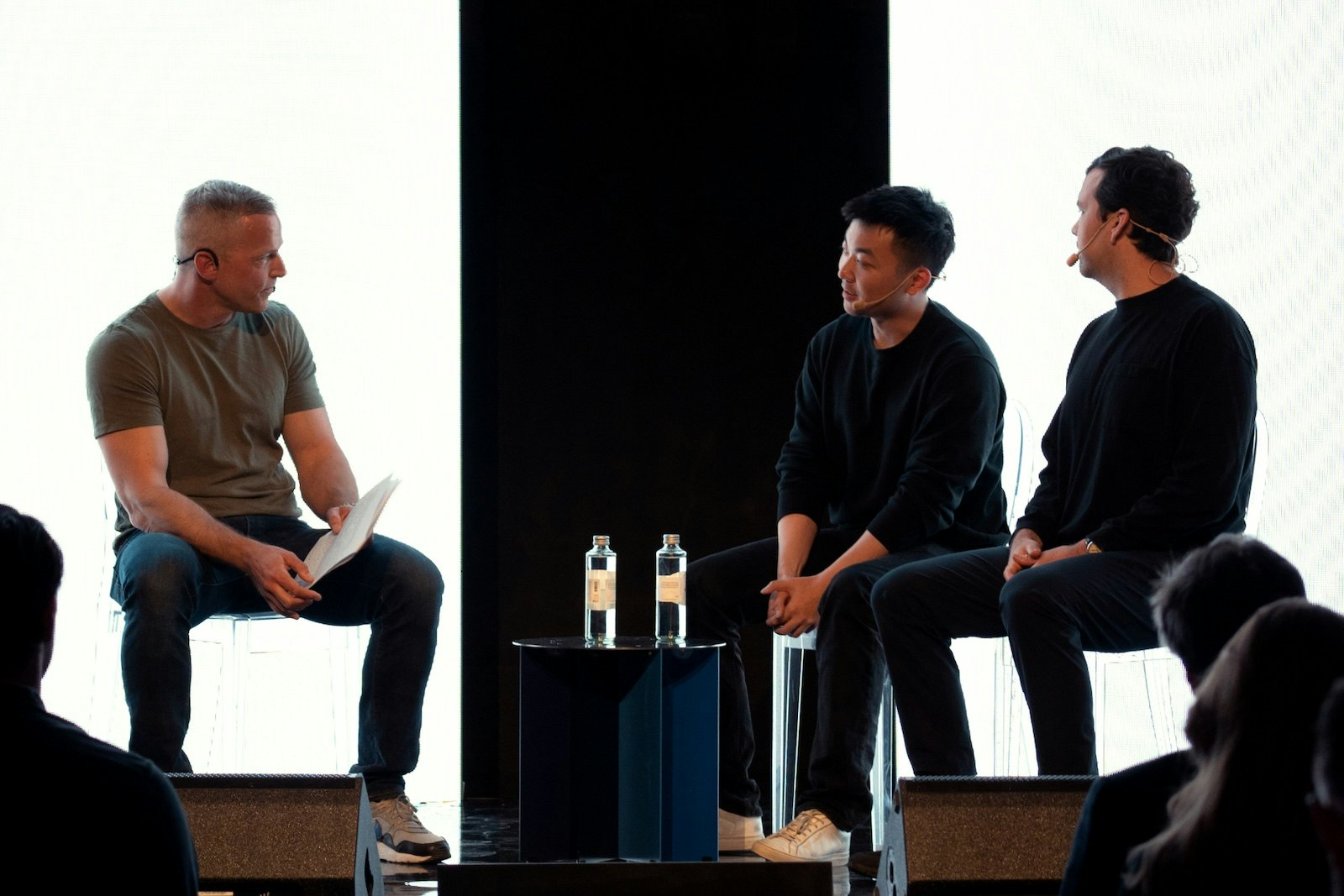A couple of hundred AI enthusiasts have gathered by the entrance of the old church building on Skeppsholmen, one of the islands in central Stockholm. The Sana AI Summit is about to kick off with guests including investor Benedict Evans, MIT’s Max Tegmark and founders like hardware startup Nothing’s Carl Pei.
Joel Hellermark, founder of AI company Sana, is organising the summit for the second year in the city. Stepping onto the stage he jokingly welcomes the audience to “the capital of AI” and then adds “No, no one calls Stockholm that, but perhaps one day”.
Hellermark, who started Sana straight after finishing high school in 2016 after learning coding from free Stanford classes instead of going to university, has often been described as something of a child genius in Sweden. Now, in his late 20s, he’s leading a company of over 100 employees that’s raised more than $85m in venture capital from the likes of US-giant NEA, Menlo Ventures and EQT Ventures.
Sana has developed enterprise software that it calls “a knowledge assistant”, which indexes company information. This makes it searchable and accessible to employees with the use of AI.
The company has about 300 enterprise customers, such as pharmaceutical companies Novartis and Merck and mobility startup Voi. It also has about 20k commercial users who have signed up using the website and integrated Sana on their own.
So, a week ahead of the company’s big, on-stage event, Sifted sat down with the boy wonder to ask what’s next for Sana, and how it’s using AI to get as close to human-level reasoning as it can.
Real reasoning?
The interview takes place after a tour of Sana’s offices which Hellermark says has “a bit of Japanese-Italian interior”.
Like many other AI companies that base their products on top of third-party large language models (LLMs), Sana is operating in a market where there is a lot of hype and over-promising — and plenty of competition.
When asked how it stands out from the crowd, Hellermark brings up two things that he believes makes Sana different.
One is the first-mover advantage that comes with having been around for eight years. Sana has spent a lot of time and resources developing tech to index its customers’ different applications and external programmes into a single system, he says.
By integrating all the customers’ applications into its product, as well as external ones like Salesforce, Notion, Slack, Google Drive and meetings, the knowledge assistant can go through pretty much every store of company information that the employee might need.
“If you can build the best index of all knowledge sitting in a company, hook it up to the LLMs and then own the user experience, then you build the interface for AGI (artificial general intelligence) and that is what we are working towards now,” Hellermark says.

At the Sana AI Summit, Hellermark launches his company’s next-generation knowledge assistant, A-4, which uses something called “step reasoning” to increase the reliability of LLMs like GPT-4.
“When you ask Sana a question, it makes up a plan. It will go through which systems it needs to search in to find the answer, if it needs any tools, if it needs to look through structured data — step by step. It will — by a chain of thought — use reasoning to come up with how to solve the question,” he says.
“It will then structure the data, synthesise it and then bring it to the LLM, which will generate an answer.”
With the latest version of its knowledge assistant, it will also be able to “action” work, such as updating programmes with information gathered from meetings.
Versatile
The second aspect where Sana stands out, according to Hellermark, is that Sana’s assistant is LLM agnostic. It has just added OpenAI’s latest model GPT-4o to its list that includes Llama, Claude, Mistral and Gemini. Sana will then use the LLM preferred by the customer or pick the one best suited for the specific task.
Hellermark says he’s been travelling back and forth to San Francisco a lot recently, where the Sana investor and board member Scott Sandell is based. The NEA investor has been involved in several IPOs that includes Salesforce, Tableau, Databricks and Snapchat.
Although Sandell has done a lot of successful IPOs, Hellermark believes there isn’t an imminent push for Sana to go public.
“What we liked with NEA is that they have a long perspective on their investments”, he says.
“Scott has done so many IPOs so it wouldn’t be logical for him to waste time on a company that cannot grow beyond a value of $100bn.”
With Sana’s valuation of $250m at its last funding round one year ago, it has a long way to go to $100bn — but Hellermark is not short on ambition.
“If you can build the knowledge assistant that enables every knowledge worker globally to access all the [company] information and become the interface to get people to work with AGI, then we are very well positioned to build a generational company in line with the companies that Scott has backed historically,” he says.
And unicorn status may not be so far off, according to Hellermark.
“We are growing 4x year on year and we are well positioned to raise more funding later this year,” he says.
With the market on fire, Sana needs to invest further into developing its product but also to open more offices for a global go-to-market strategy.
“In principle, every CEO across the globe is right now looking at how to connect their company knowledge to foundational models and build assistants to their employees,” Hellermark says.
“It’s an adoption rate that is faster than any other enterprise software in history. Then we need the capital to be there.”
Read the orginal article: https://sifted.eu/articles/sana-ai-joel-hellermark-interview/


